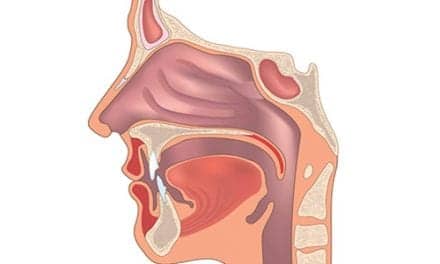Research conducted at Boston Children’s Hospital indicates that obesity might cause asthma via factors in the immune system, and suggests a new way of treating the condition in obese people — who often respond poorly to standard asthma medications.
The study, conducted in a mouse model of asthma and in human lung fluid, was led by Dale Umetsu, MD, PhD and Hye Young Kim, PhD, of the Division of Allergy and Immunology at Boston Children’s. Their findings were subsequently published online Dec. 15 by Nature Medicine.
“Since it’s been a puzzle to understand why obesity predisposes people to asthma, our goal was to find the connection between these two problems, which occur in both children and adults and to explore possible new treatments,” says Umetsu.
The researchers studied mice that were fed a high-fat diet causing them to become obese. Unlike mice fed normal diets, the obese mice developed airway hyper-reactivity or constricted and twitchy airways, the predominant feature of asthma.
The team also found that obesity appeared to alter the innate immune system — the body’s first responder to infection — in several ways to cause lung inflammation. The lungs of the obese, asthmatic mice had several differences from those of non-obese mice, including high levels of the protein interleukin 17A (IL17A), a cytokine signaling molecule associated with several inflammatory conditions.
The obese mice also had increased numbers of the immune cells that produce IL17A, known as type3 innate lymphoid cells (ILC3 cells), activation of an inflammatory protein known as NLRP3 inside lung cells, and increased production of the cytokine IL-1?, a stimulator of ILC3 cells.
When the obese mice were genetically altered so that they could not produce IL17A or NLRP3, they did not develop asthma. But when the same mice had IL-1? or ILC3 cells placed directly in their lungs, either was enough to spur production of IL7A and to cause asthma symptoms.
“We have discovered an inflammatory pathway to asthma that previously had not been recognized,” says Umetsu. “This pathway may be resistant to standard asthma medications such as corticosteroids.”
In addition, when IL-1? production was blocked with the drug anakinra (Kineret, Swedish Orphan Biovitrum), used to treat rheumatoid arthritis, the obese mice did not develop asthma.
Although researchers were unable to study human patients directly, they did examine lung fluid from 10 patients with lung disease who underwent the diagnostic test bronchoalveolar lavage.
Those with severe asthma had increased numbers of ILC3 cells producing IL-17 as compared with those with mild asthma or no asthma — circumstantial evidence suggesting that the mouse model may mirror what occurs in obese people who develop asthma.
“Obese people have been noted to have elevated systemic levels of IL-17 and IL-1?, particularly those who have non-allergic asthma,” Umetsu notes.










